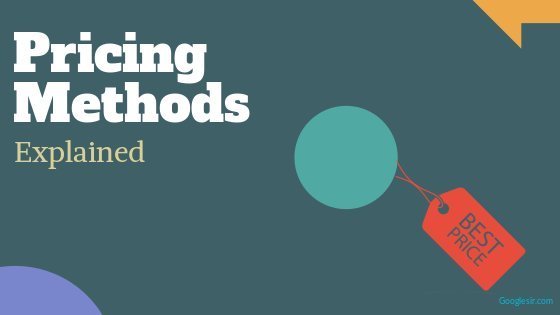13th October, 2022
Pricing a product or service effectively is essential for all businesses, but it’s especially important for startups and new companies that are still looking to break into the market and identify their USP. Pricing can change how your customers view your product. Unlike trading where trading platforms like Bitcoin Prime and many others evaluate the market prices for you, as a startup owner you have to evaluate the market yourself and set up a pricing strategy for your business.
Although determining the price may appear straightforward at first glance, there are many pricing tactics that you need to take into account. There is no ideal price plan, so bear that in mind before we get into each one.
● Cost-Plus Pricing
The most obvious pricing method, and frequently the default choice for small firms. With the Cost-Plus technique, you simply determine your cost and add a margin (the “plus” part), as the name implies.
● Competitive Pricing
Simply put, competitive pricing entails charging slightly more or less than your rivals. For instance, slightly higher to indicate a superior product or slightly lower to appeal to customers who are price conscious.
You probably use a competitive pricing approach if your goods or services have been commoditized or if you are selling raw materials. You can’t use this strategy if you are promoting trading platforms like bitcoin prime to help your trading business. You will have to choose the strategy that best suits your business.
Gas stations make a great case study for pricing competition. Although they are free to set their own prices, what you (the customer) ultimately pay depends on what other gas stations are pricing. The price can be modified little (e.g., Shell) higher or slightly (e.g., Arco) cheaper, as we indicated above, but your competition will mostly dictate what you charge.
● Penetration Pricing
Using the penetration pricing technique, you join the market at a cheap price. The most prevalent examples are phone, internet, and cable companies, which frequently offer “new client” introduction prices that are significantly less expensive than standard prices.
The penetration pricing strategy appears to be appealing to start-up companies since you can set yourself out from the competition right away. But there is a chance. Price-sensitive clients may increase your sales and draw you in, but when you raise your prices, many of them may defect.
Startups and new companies must be exceedingly cautious when setting penetration prices since they frequently operate at a loss or with razor-thin margins. It’s acceptable to offer special “Grand Opening” prices, but keeping penetration prices for an extended period of time can bankrupt a small business.
● Bundle Pricing
Combining services or goods might benefit both you (as a business) and your clients. Phone, internet, and cable companies are once more common instances. For instance, by bundling their phone and internet services, the client will save money. The travel sector frequently combines bookings for lodging, transportation, and flights. and the insurance sector, which offers auto and house insurance.
Bundle pricing is tempting from the consumer’s point of view due to the cost savings, and the ease of having a single bill (provider) is very alluring. Additionally, bundle pricing is advantageous for businesses because it increases sales of goods and services. Additionally, bundling will increase the stickiness of your product or service, making it more difficult for customers to migrate to your rivals.
Are there any drawbacks to bundle pricing then? It varies. As was already indicated, the consumer anticipates large savings, which frequently translates to a lower profit margin. Bundle pricing is advantageous if you can combine your goods or services without substantially reducing your profit margin (customer and business). Bundle pricing, however, can put a lot of pressure on your company if your profit margins are already thin. Finally, if you don’t make the bundle enticing enough, it probably won’t succeed.
